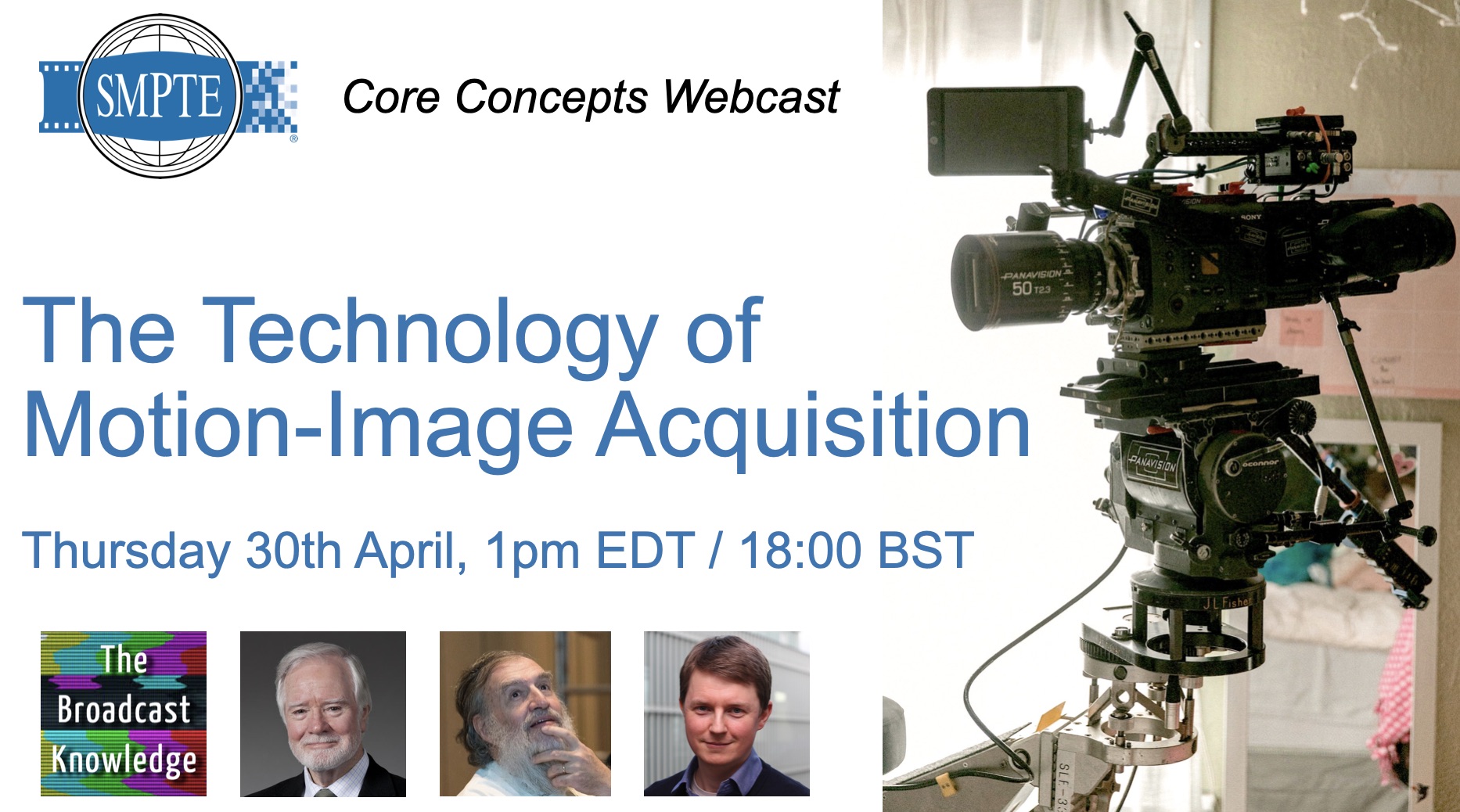A lot of emphasis is put on the tech specs of cameras, but this misses a lot of what makes motion-image acquisition an art form as much as it is a science. To understand the physics of lenses, it’s vital we also understand the psychology of perception. And to understand what ‘4K’ really means, we need to understand how the camera records the light and how it stores the data. Getting a grip on these core concepts allow us to navigate a world of mixed messages where every camera manufacturer from webcam to phone, from DSLR to Cinema is vying for our attention.
In the first of four webinars produced in conjunction with SMPTE, Russell Trafford-Jones from The Broadcast Knowledge welcomes SMPTE fellows Mark Schubin and Larry Thorpe to explain these fundamentals providing a great intro for those new to the topic, and filling in some blanks for those who have heard it before!
Russell will start by introducing the topic and exploring what makes some cameras suitable for some types of shooting, say, live television and others for cinema. He’ll talk about the place for smartphones and DSLRs in our video-everywhere culture. Then he’ll examine the workflows needed for different genres which drive the definitions of these cameras and lenses; If your live TV show is going to be seen 2 seconds later by 3 million viewers, this is going to determine many features of your camera that digital cinema doesn’t have to deal with and vice versa.
Mark Schubin will be talking about at lighting, optical filtering, sensor sizes and lens mounts. Mark spends some time explaining how light is made up and created whereby the ‘white’ that we see may be made of thousands of wavelengths of light, or just a few. So, the type of light can be important for lighting a scene and knowing about it, important for deciding on your equipment. The sensors, then, are going to receive this light, are also well worth understanding. It’s well known that there are red-, green- and blue-sensitive pixels, but less well-known is that there is a microlens in front of each one. Granted it’s pricey, but the lens we think most about is one among several million. Mark explains why these microlenses are there and the benefits they bring.
Larry Thorpe, from Canon, will take on the topic of lenses starting from the basics of what we’re trying to achieve with a lens working up to explaining why we need so many pieces of glass to make one. He’ll examine the important aspects of the lens which determine its speed and focal length. Prime and zoom are important types of lens to understand as they both represent a compromise. Furthermore, we see that zoom lenses take careful design to ensure that the focus is maintained throughout the zoom range, also known as tracking.
Larry will also examine the outputs of the cameras, the most obvious being the SDI out of the CCU of broadcast cameras and the raw output from cinema cameras. For film use, maintaining quality is usually paramount so, where possible, nothing is discarded hence creating ‘raw’ files which are named as they record, as close as practical, the actual sensor data received. The broadcast equivalent is predominantly RGB with 4:2:2 colour subsampling meaning the sensor data has been interpreted and processed to create RGB pixels and half the colour information has been discarded. This still looks great for many uses, but when you want to put your image through a meticulous post-production process, you need the complete picture.
The SMPTE Core Concepts series of webcasts are both free to all and aim to support individuals to deepen their knowledge. This webinar is in collaboration with The Broadcast Knowledge which, by talking about a new video or webinar every day helps empower each person in the industry by offering a single place to find educational material.
Watch now!
Speakers
 |
Mark Schubin Engineer and Explainer |
 |
Larry Thorpe Senior Fellow, Canon U.S.A., Inc. |
 |
Russell Trafford-Jones Editor, The Broadcast Knowledge Manager, Services & Support, Techex Exec Member, IET Media |


